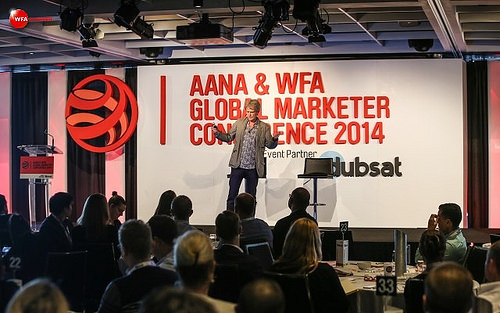Australian draft legislation to ban TV advertising defeated
03/03/2011
Back to the overview
The Australian Senate has voted down a Bill to ban television advertising of high fat, sugar and salt (HFSS) foods to children between 6:30am to 9:30 pm. The Bill was tabled by the Australian Greens party on the 30 September 2010 but was defeated on the 3rd of March 2011 with Senators voting 28 to 6 against the draft legislation.
The Australian Association of National Advertisers (AANA) is encouraged by the outcome, which demonstrates that government acknowledges the lack of causal evidence linking fast food advertising and obesity and is not considering blanket advertising bans as the solution to the nation's obesity problem. “The outcome also recognises the effectiveness of self-regulatory initiatives already in place to promote and ensure responsible advertising to children practices,” said AANA's CEO Scott McClellan.
The AANA Code for Advertising and Marketing Communication to Children and AANA Food & Beverages Advertising & Marketing Communications Code ensure that advertisers and marketers develop and maintain a high sense of social responsibility when marketing to children in Australia. Virtually all upheld consumer complaints received under the two codes to date have been honoured and advertisers have either amended or discontinued the offending ads.
In 2009, AANA convened a leadership group of Quick Service Restaurants, including McDonald's, KFC, Pizza Hut, Hungry Jack's and Yum restaurants, in an initiative to only advertise healthier choices to children under 14. Meanwhile, 17 leading food and grocery manufacturers have signed up to Responsible Children's Marketing Initiative of the Australian Food & Grocery Council, committing not to advertise to children, unless products promote healthy dietary choices and a healthy lifestyle consistent with scientific standards.
New industry research has found that adverts for HFSS foods aimed at children now only make up a very small portion of all food and beverage advertisements on children's television in Australia. According to data sourced from Commercial Monitors, an Australian advertising information service, just 2.4 per cent of all HFSS food and beverage advertisements on children's TV from March to May 2010 targeted children under the age of 12.
For any additional questions, please contact Mary Cong, Communications and Research Officer, AANA email: [email protected]
Sign up to monthly WFA news
The Australian Association of National Advertisers (AANA) is encouraged by the outcome, which demonstrates that government acknowledges the lack of causal evidence linking fast food advertising and obesity and is not considering blanket advertising bans as the solution to the nation's obesity problem. “The outcome also recognises the effectiveness of self-regulatory initiatives already in place to promote and ensure responsible advertising to children practices,” said AANA's CEO Scott McClellan.
The AANA Code for Advertising and Marketing Communication to Children and AANA Food & Beverages Advertising & Marketing Communications Code ensure that advertisers and marketers develop and maintain a high sense of social responsibility when marketing to children in Australia. Virtually all upheld consumer complaints received under the two codes to date have been honoured and advertisers have either amended or discontinued the offending ads.
In 2009, AANA convened a leadership group of Quick Service Restaurants, including McDonald's, KFC, Pizza Hut, Hungry Jack's and Yum restaurants, in an initiative to only advertise healthier choices to children under 14. Meanwhile, 17 leading food and grocery manufacturers have signed up to Responsible Children's Marketing Initiative of the Australian Food & Grocery Council, committing not to advertise to children, unless products promote healthy dietary choices and a healthy lifestyle consistent with scientific standards.
New industry research has found that adverts for HFSS foods aimed at children now only make up a very small portion of all food and beverage advertisements on children's television in Australia. According to data sourced from Commercial Monitors, an Australian advertising information service, just 2.4 per cent of all HFSS food and beverage advertisements on children's TV from March to May 2010 targeted children under the age of 12.
For any additional questions, please contact Mary Cong, Communications and Research Officer, AANA email: [email protected]
Sign up to monthly WFA news















































































